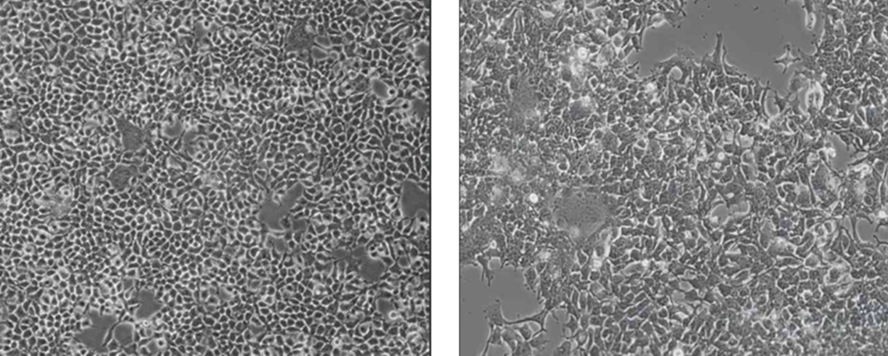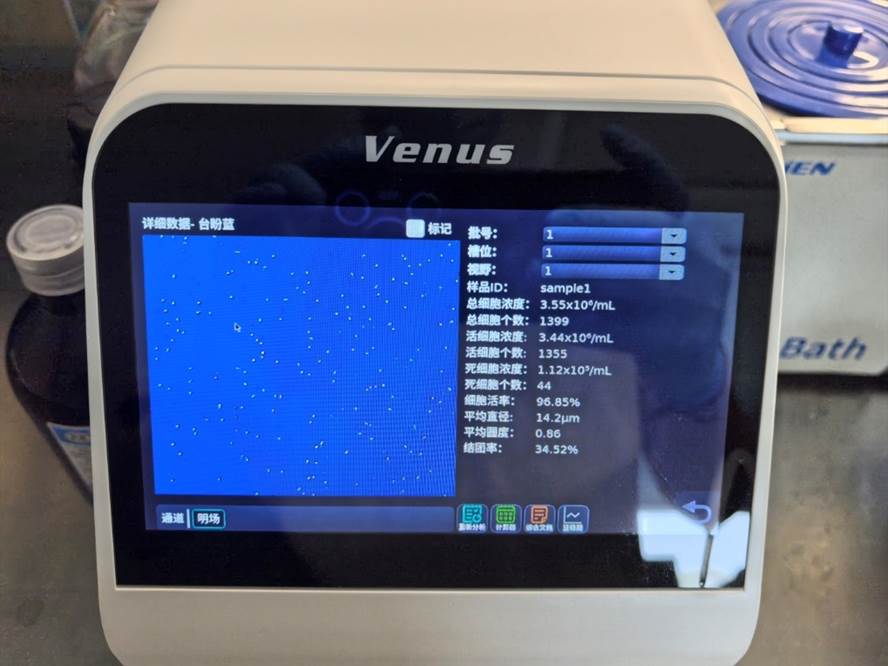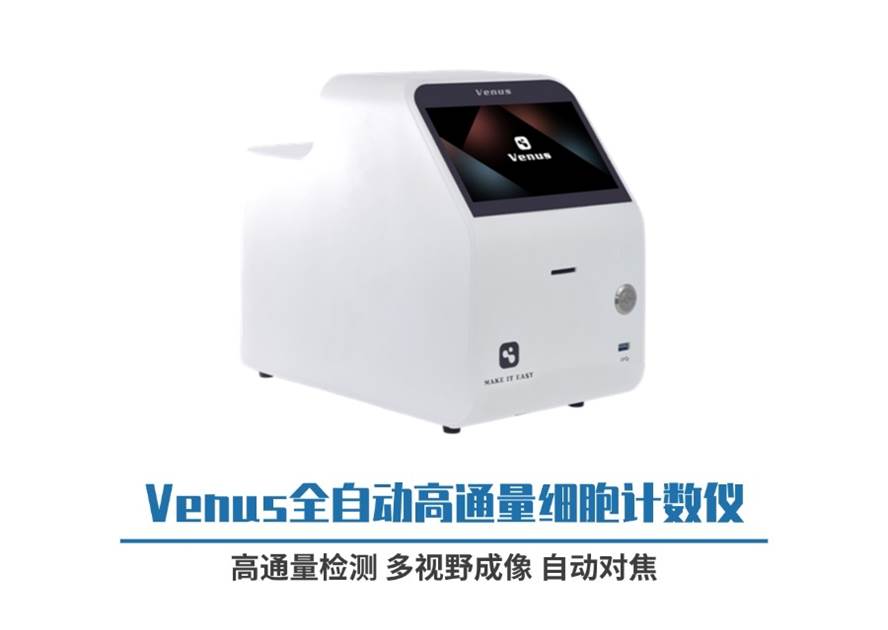[Newton's Footprints] Does South China Botanical Garden also need to use a cell counter?
Release time:
2025-06-03
Source:
Newtonian Optics
Venus Cell Counter arrives at South China Botanical Garden
South China Botanical Garden, Chinese Academy of Sciences
01 Introduction to the Botanical Garden
The South China Botanical Garden of the Chinese Academy of Sciences was formerly the Institute of Agriculture and Forestry Botany of Sun Yat-sen University, founded by the renowned botanist Academician Chen Huan-Yong in 1929 year. 1954 In [year], it was reorganized under the Chinese Academy of Sciences and renamed the South China Institute of Botany, Chinese Academy of Sciences, 1956 in [year], the South China Botanical Garden and Dinghushan National Nature Reserve were established, 2003 in [year], it was renamed the South China Botanical Garden, Chinese Academy of Sciences. 。2022 year 5 month 30 day, the State Council approved the establishment of the South China National Botanical Garden, relying on the South China Botanical Garden, Chinese Academy of Sciences.
The South China Botanical Garden jointly established the National Key Laboratory for Plant Diversity and Special Economic Crops, possessing 2 national field scientific observation and research stations, /CERN stations (Dinghushan Station, Heshan Station), 1 CAS positioning research stations, / Guangdong Province Positioning Observation and Research Station (Xiaoliang Station), 1 Guangdong Province positioning observation and research stations, 3 CAS key laboratories (Plant Resource Conservation and Sustainable Utilization, Vegetation Restoration and Management of Degraded Ecosystems, Molecular Analysis and Genetic Improvement of South China Agricultural Plants), 1 CAS engineering laboratories (Island and Coastal Zone Ecological Restoration), 2 Guangdong Province key laboratories (Digital Botanical Garden, Applied Botany), 1 Guangdong Province engineering technology research centers (Development of Special Plant Resources), as well as research platforms such as the Guangdong Provincial Germplasm Bank and the South China Plant Identification Center; it is the Chinese Project Office of Botanic Gardens Conservation International ( BGCI ), the Secretariat of the International Association of Botanic Gardens ( IABG ), the World Magnolia Center, and the location of the Guangdong Botanical Society and Guangdong Society for Plant Physiology.
1954 Since its affiliation with the Chinese Academy of Sciences in [year] (as of 2022 year-end data), it has compiled and published monographs such as "Flora of China" and "Vegetation of China" (main compiling unit), "Flora of Guangzhou", "Flora of Guangdong", "Vegetation of Guangdong", "Ecological Restoration Research of Tropical and Subtropical Degraded Ecosystems", "Landscape Plants of China", "Flora of Ex Situ Cultivated Plants in China", totaling 500 volumes (parts, fascicles); published SCI indexed papers 5300 papers, including those published as the first author in Nature and Science and other internationally renowned journals; received various scientific and technological achievement awards 320 times, including the National Natural Science First Prize, National Technological Invention First Prize, National Natural Science Second Prize, National Science and Technology Progress Second Prize, etc.; research achievements were twice honored as 2000 years and 2006 year, twice awarded " Top Ten News of China's Basic Research" ” ; authorized patents 460 items, software copyrights 40 items; 1988 Since [year], variety rights have been obtained / approved / internationally registered new varieties 260 multiple.

02 Experimental Background
Human embryonic kidney cells ( HEK293 cells) rarely express endogenous receptors required by extracellular ligands and are relatively easy to transfect, making them a commonly used cell line for studying the expression of exogenous genes. 293 A derivative strain of cells: 293T/17 has higher transfection efficiency, becoming a powerful tool for researchers to study gene function.

03 Customer Pain Points
293 The defect of cells is that their adherence strength is relatively low during growth. . Therefore, are easily lost during experiments, thus affecting experimental results. . If a lab newly acquires 293 cells via mail and the cells are in a culture flask, it is necessary to let the cells settle for a few days, because a large number of cells will float in the culture medium. 。
Efficient and Accurate Cell Analysis Solutions
Due to 293 the low adherence strength of cells, they tend to float in the culture medium, making it difficult to accurately estimate cell numbers. Newton Optical Venus cell counter can quickly and accurately count cells in the culture medium, helping experimenters to monitor the actual number of cells in real-time and determine their growth status and proliferation. Venus Can complete 2 brightfield analysis of a single field of view within seconds, 1 complete within minutes 6 samples 30 fields of view analysis results. . Furthermore, based on a multi-field imaging system, more sample acquisition ensures more stable and accurate data results.



Newton Optics is honored to contribute to the scientific research of the South China Botanical Garden, Chinese Academy of Sciences. Newton Optics aims to provide better and more convenient experimental solutions for the majority of scientific researchers!
Product Quick View

END

Guangzhou Newton Optics Research Institute Co., Ltd. Located in Tianhe, Guangzhou, it is an innovative enterprise focusing on the application of intelligent imaging technology in the field of life sciences. The company focuses on cell analysis and has established a complete R&D, production, and sales system.
Newton Optics adheres to the values of integrity, responsibility, and excellence, and is committed to bringing innovative and ultimate scientific tools to customers in the global life science field.

Service Hotline: 400-9613721
Customer Service Phone: 15322243697 (WeChat)
Official Website: www.newtonoptic.com
R&D Center: Gaopu Road, Tianhe District, Guangzhou City 38 No. 1 North Wing, Building 3 Floor
Key words:
Recommended News

National Advisory Service Hotline
Sales consultation: +86 15322248165(Whatsapp/Wechat)
E-mail:global@newtonoptic.com
R & D Center: Room 301, Floor 1, Building 1, No.38 Gaopu Road, Tianhe District, Guangzhou City, Guangdong Province

Follow Wechat Official Account
©2024 Guangzhou Newtonoptic Research Institute Co., Ltd. All rights reserved


